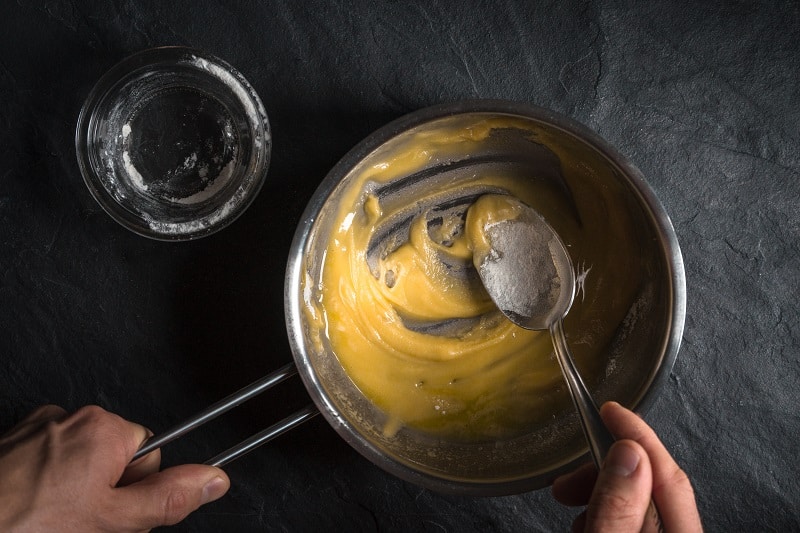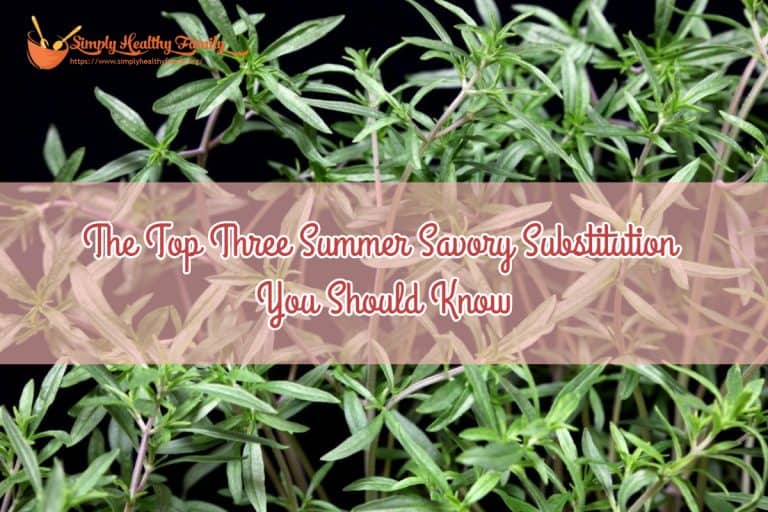How to Make Gravy Less Salty: Ways to Fix Oversalted Gravy
You’ve worked hard to make that perfect roast. When you take it out of the oven, you see lots of good cooking juices in the roasting pan – perfect for making that finishing touch, a good gravy.
So you go to work, but uh-oh. The gravy wound up too salty. What a waste, you might think.
But don’t despair. There are many ways you can save that gravy.
Add milk
Besides adding rich texture to the gravy, dairy products tone down excess saltiness.
Add milk, heavy cream, sour cream, full-fat yogurt, or half-and-half to the gravy, one tablespoon at a time. Stir constantly and taste often, until you’re satisfied.
Add more liquid
Adding water helps dilute the saltiness. Better yet, unsalted stock or broth.
Note: adding more liquid will make the gravy thinner, so you will need to add a thickener, like roux or cornstarch slurry (recipes below). If you don’t have cornstarch, any cornstarch substitute can make a slurry too.
Add pureed beans
Does this surprise you? But pureed beans work very well to thicken a sauce or gravy and dilute saltiness.
Drain 1 cup of canned white beans (a low-sodium brand). Put into a blender with 1 or 2 tablespoons of plain water.
Blend until very smooth, then stir the puree into the salty gravy, ¼ cup at a time.
The beans will thicken the gravy as it reduces the salt taste, so take a few seconds to stir and taste before adding more. Stop adding beans when the gravy is thick enough and tastes good.
This trick is a flour-less bonus for people who can’t eat gluten but love gravy.
Add a sliced, unpeeled potato
This won’t fix a salty gravy entirely, but the potato will absorb some of the excess salt.
Under-salt other side dishes
Add less salt than usual to your rice, mashed potatoes, and accompanying dishes like casseroles. The salty gravy will complement the bland food on the plate.
Serve semi-dry white wine with the meal
This is a trick you can compare to an illusion. The sweetness of a semi-dry white wine balances excess saltiness on the tongue so that you notice it less.
Sweetness also balances hot spices and bitterness, so keep a bottle of white wine in the fridge to serve with fiery food.
Add acid to cut the salt in gravy
A little lemon juice or a teaspoon of vinegar can rebalance the saltiness of your gravy. Add just a little at a time, stirring and tasting between doses, so as not to overpower the gravy.
Add sugar
A little sugar or other sweet ingredients can rescue your salty gravy.
Stir a little brown sugar into the gravy, and stir well before tasting. By a little, we mean a teaspoon at a time.
You can also use maple syrup or light honey; anything sweet whose flavor isn’t so strong as to overwhelm the gravy.
Be careful not to add too much sweetener to the gravy, as too much will spoil it altogether.
Add unsalted broth or stock
Make sure your broth has no added salt, or it will simply add to the problem. Stir the broth or stock into the gravy slowly, tasting as you go to judge results.
Add roux
Roux is nothing more than a thickener made with equal parts of butter, oil, lard or other fat, and flour.
A bland roux will help dilute the saltiness in an over-salted gravy. As with all ingredients you use to rescue an over-salted gravy, add it slowly to the hot gravy and stir often.
Note: Give the gravy a minute between additions of roux to judge how much thicker it’s getting, and when you want to stop adding roux.
Recipe for 1 cup roux

Roux
Ingredients
- 3/4 cup oil or butter melted over low heat
- 1 cup all-purpose flour
Instructions
- Warm a saucepan or cast-iron skillet for 2 minutes over medium heat.
- Melt the butter or other solid fat, if using. If not, add the oil to the skillet.
- If using butter, do not let it brown.
- If using oil, heat it for another 2 minutes.
- Add the flour and whisk constantly.
- Whisk another 6 -8 minutes, or until the roux is smooth and has a light golden color. Watch out for burning.
- You can make roux ahead to store. Transfer the made roux to a heatproof bowl and stir it to cool down quickly.
- Store in the refrigerator for 2 months, or up to 6 months in the freezer.
- To freeze roux, spoon 1 tablespoon into each section of an ice cube tray.
- Use 1 or 2 cubes to thicken a sauce, soup, or stew; or use 8 cubes to make ½ cup.
- Another thickener is cornstarch or potato starch. Mix 1 tablespoon of either starch with 1 cup of cold water and stir to avoid separation.
- Add this starchy slurry to the hot gravy, soup, or stew, slowly and only 1 tablespoon at a time. Stir constantly. You may need only a few tablespoons to obtain a thicker sauce.
Read Related Article: How to Make Icing Thicker
Preventing over-salted gravy or sauce
Under-salt your gravy or sauce at first. When it’s almost ready, taste and add salt to taste.
Never shake salt out of a shaker directly on to a dish you’re cooking. Either measure it or shake it into the palm of your hand so you can judge how much it is.
Make sure the salt shaker’s lid is on tightly. It’s happened that the lid came away and the cook accidentally poured a ton of salt into the pan.
Don’t use stock cubes and other salty products. Soy sauce also adds saltiness, so go easy on the salt when cooking with it.
Other salty products are olives, fish sauce, pickles of all kinds, and canned anchovies; basically, anything preserved in salt. If adding those ingredients to your cooking, use caution when adding salt.
Many kinds of cheese have salty flavors, like Parmesan. Even some soft cheeses can be salty.
Taste the cheese before adding it to your cooking and estimate how much it will affect the saltiness of the finished dish.
Soak salted pork products in cold water before cooking. Two hours’ soaking should loosen the excess salt in the pork and release it into the water.






